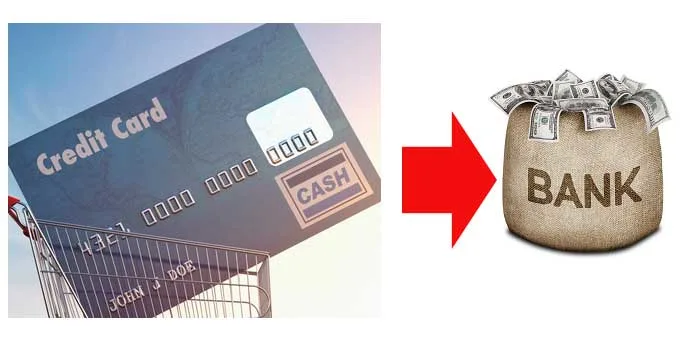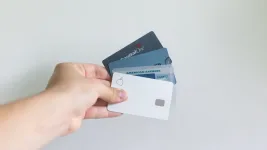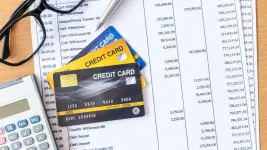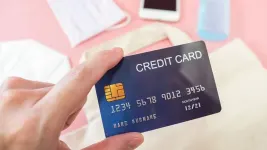Step-By-Step Procedure to Process a Credit Card To Bank Transfer [August, 2024]
Credit cards have become an indispensable asset in recent times. These instruments make instant purchases and emergency spending feasible. You need to pay for the amount of credit limit used each month, either in full (recommended) or partially, to maintain a good credit record. But the use of credit cards has been limited by the financial authorities. For example, you cannot pay for loans, currency payments, SIPs, investments, or mutual fund investments using your credit card. For such purposes, you need to rely on your bank accounts. But what if you need instant cash in your bank account – can your credit card help you?
The answer is Yes! You can either apply for a credit card loan, withdraw cash from your credit card cash limit, or transfer funds from your credit card to your bank account directly. Want to know how to easily transfer money from your credit card to your bank account? Read through this guide to learn more about the procedure of credit card to bank transfer.
How To Process A Credit Card To Bank Transfer Using Online Features
It is always better to transfer funds from your credit card limit to your bank account rather than withdraw cash, which comes with a high-interest rate. Before analysing whether you can transfer money from your card, it’s important to understand why you need to do this in the first place. Remember that a transfer can add to an added interest, and regular bank transfers can attract the attention of the tax authorities. So, use this facility only when it’s urgent.
There are several ways to transfer money directly from your credit card to your bank account. Let’s take a closer look at these individual processes.

Direct Credit Card To Bank Transfer
You can directly initiate a credit card to bank transfer using your online banking app or smartphone. However, please note that the daily transfer limit may vary from bank to bank. Therefore, we advise you to check with your respective bank for complete information. There may also be time delays, especially if the banks are different – which may take 2-3 days to process the transfer. The transaction will be instant if the card and bank accounts belong to the same bank.
How To Process Credit Card To Bank Transfer Using Net Banking
Here are the online banking steps to transfer credit card money to your bank account:
Step 1. Log in to your bank’s online banking website.
Step 2. Visit the credit card section of the website.
Step 3. Then select the transfer option.
Step 4. Specify the amount your want to transfer.
Step 5. Enter the other details as requested by the form.
Step 6. Follow the guided steps till the transaction is processed.

How To Process A Credit Card To Bank Transfer Through A Phone Call
Step 1. Call your credit card company and provide the verification details.
Step 2. Request them to process a credit card to bank transfer.
Step 3. Confirm the amount you want to transfer, and ask them for confirmation on your phone (SMS) or email.
You Can Also Use The Cheque Facility For Credit Card To Bank Transfers
Step 1. In the recipient’s name column, write your name as “self.”
Step 2. Add the rest of the necessary information that would ideally appear on the check.
Step 3. Finally, deposit the check at your nearest bank branch.
ATM Cash Withdrawals For Credit Card To Bank Transfers
ATM Cash withdrawals is a feature you can use to take money from your credit card as a cash withdrawal and deposit the same into your bank account. You need to:
Step 1: Withdraw cash from an ATM using a credit card.
Step 2: Deposit cash at your bank branch.

Offline Credit Card To Bank Transfers
Alternatively, you can send money to your bank account using NEFT and RTGS. To do this, you can visit your bank and request a transaction form. Fill in the required details and submit the form to the appropriate bank officer.
Credit Card To Bank Transfers: Important Considerations
When transferring balance credit cards to your bank account, you should be aware of the following:
- It is important to avoid transferring balance credit cards to your bank account as a regular habit since the main purpose of credit cards is to make direct payments, not to generate cash in your bank account.
- Using a credit card for a bank transfer transaction that exceeds Rs. 200,000 per year can be referred to the income tax department. Frequent transfers from your credit card to your bank account get attention, and the income tax department may monitor you.
- In addition, if you do not pay your credit card charges after receiving a generated credit card statement, you will incur a monthly penalty of 3-4% of the outstanding amount. This will cost you more than transferring your credit card balance to your bank account.
Conclusion
There are certain restrictions on transferring balance credit cards to your bank account, but these can be used in emergencies. Such transfers are more cost-effective than withdrawing cash from a credit card or taking a personal loan due to the higher interest rates. It is recommended to process credit card-to-account transfers depending on the access status of the mobile app and the amount of money to be transferred. Following this, you can instantly transfer money from your credit card to your bank account, which can be useful in financial emergencies.
FAQs
Q. How to process a credit card to bank transfer?
Today, you can withdraw or transfer money from a credit card to a bank account. This setup is very resourceful in an emergency. You can use offline methods such as check signing, RTGS, NEFT, and ATM.
Q. Are credit card-to-bank transfers risky?
Credit card-to-bank account transfers are more viable, easy, and affordable than other methods. Still, they often get the limelight of the banking/income tax department and can get you into trouble. Therefore, this exercise should be done with caution and without overdoing it.
Q. What is the transfer fee from a credit card to a bank account?
Fees for transferring money from a credit card to a bank account vary by bank.
Q. Is there a restriction by some banks to process credit card-to-bank transfers?
Almost all credit card companies or banks allow you to send money to your bank account.
Q. How do I check my credit card cash limit?
To check your credit card limit, log into your online banking account to learn about your current balance, credit limit, cash limit, available balance, recent transactions, etc.

Product prices and availability are subject to change. Any price and availability information displayed on merchant's site at the time of purchase will apply to the purchase of these products. HappyCredit is a participant in the Amazon Services LLC Associates Program, an affiliate advertising program. As part of this program, we may earn commission from qualifying purchases made through the affiliate links provided on this website. We only promote products on Amazon that we genuinely believe are of high quality and value to our audience. The inclusion of affiliate links does not influence our editorial content or product recommendations. Our primary goal is to provide useful information and help you make informed purchasing decisions.
Certain portions of the text in this article might have been created using AI tools and subsequently edited by the author to improve the overall quality and clarity of the content for readers.
![Step-By-Step Procedure to Process a Credit Card To Bank Transfer [August, 2024] Step-By-Step Procedure to Process a Credit Card To Bank Transfer [August, 2024]](https://happycredit.in/cloudinary_opt/blog/opt-or5tx.webp)














